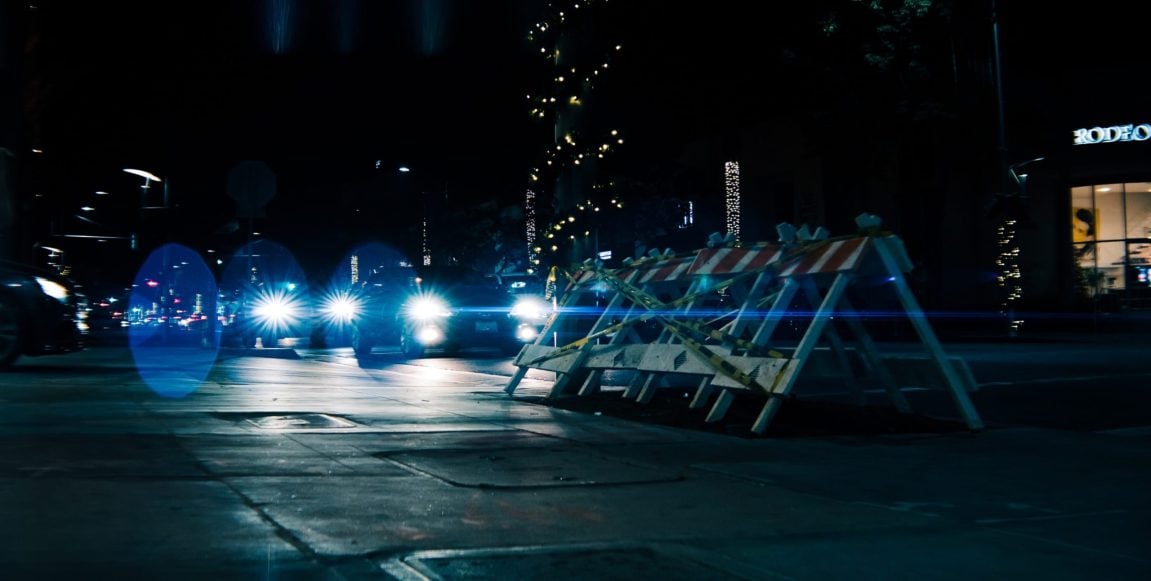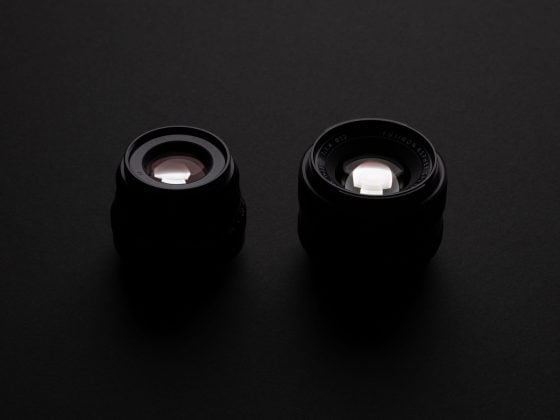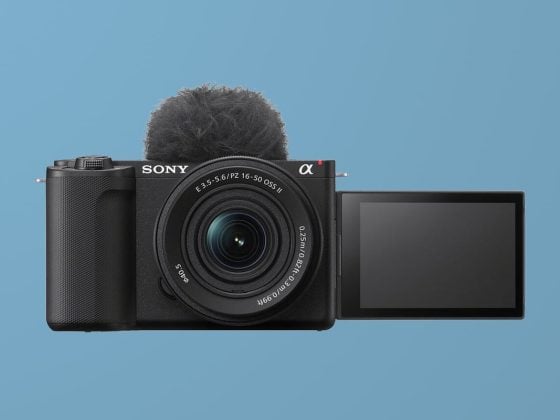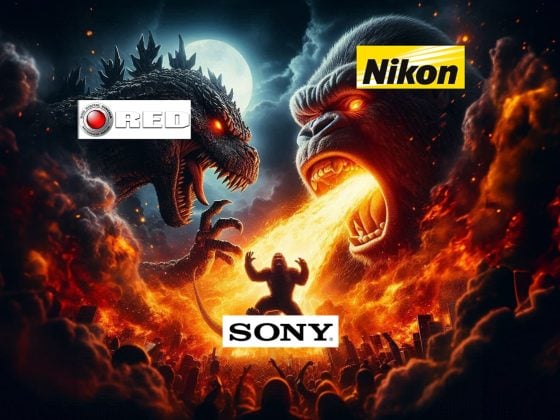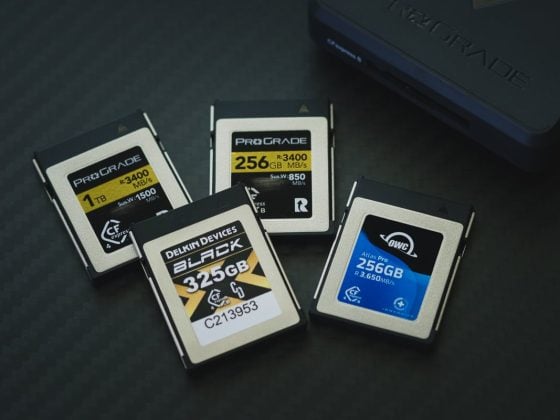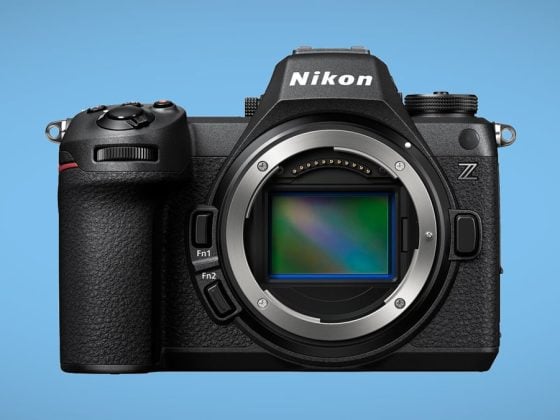For years I’ve tried to find some good deals on Anamorphic lenses or adapter to shoot video and photography with and I finally found a system that’s affordable and easy to use.
Finding old vintage adapters is very difficult or they are very expensive. There are still some great anamorphic adapters out there like the Optex 16:9, Isco Wide Screen 2000 or Anamorphic Proskar 16 (2x). But I cannot find them, or good deals on them so I’ve given up.
SLR Magic started making some pretty interesting anamorphic adapter and cinema lenses and it just made sense to go down that route. The Anamorphot-50 for full frame, and the Anamorphot-40 for APS-C and even the Anamorphot-40 compact are all modern designs that work very well if you can pair them with the right lens.
This is kind of my first impressions / review of the Anamorphot-40 1.33x with sample photo showing how I’ve used it for photography.
*I believe this Anamorphot-40 has been discontinued, but all their adapters are very similar, they just have different filter threads and some do a 1.33x others do a 2x, some are dual focus systems some are single.
As sort of a caution for anyone looking to buy an anamorphic adapter, they are not for everyone. It seems based on the reviews, half the people buying them end up not liking them. Likely because they didn’t know what they were getting into or aren’t using them correctly.
Hopefully after reading this review, you’ll know what you’re getting into so you don’t waste your money if it’s not your thing.
SLR Magic Anamorphot-40 1.33x Specs
Rear Filter Threads: 52mm
Front Filter Threads: 82mm
Element Count: Unknown, but at least 4
Minimum focus distance: 4′
Pros: Cheap, easy to use, decent image output, single focus system
Cons: 4′ minimum focus distance, images very soft below f4 aperture, a little big and heavy, APS-C or M43 only, not good with long lenses past 85mm, big reduction in sharpness when dealing with high-resolution photos.
Requirements: This lens was designed to use with lenses with a front element no wider than 40mm.
I’m also using the lens for photography, but if you’re only shooting 1080p video or even 4k, you’ll likely not see as big of a hit to the resolution as you do when shooting high-resolution photos.
Part of me wants to say this was really only designed for 1080p, 4k maybe.
Order Links
SLR Magic Anamorphot Adapters – Amazon / BHphoto
Anamorphot-40 Review | First Impressions
I got this adapter last year for use with photography, and maybe for video if I ever make any personal project or anything. I mostly just want an ultra wide look because I love the 2:1 and 2.35:1 aspect ratios, and doing it naturally with the natural anamorphic bokeh and lens flares just looks better.
The Anamorphot-40 was designed for Super 35mm or APS-C cameras. It will not work on full frame system. You will see a framed image if you try to use this on a full frame camera.
There are some pretty big pros and cons to the Anamorphot-40 that will apply to all their adapters which I will go over in more detail.
Anamorphot-40 Cons
For one, it’s definitely a better lens to use for video as it does degrade the image quality. When using it with high-resolution APS-C photos, you will see this loss in sharpness much more than you will if you’re shooting 4k because of the extra detail you get with photography.
This adapter will soften up the images, especially along the edges and your contrast and micro contrast will take a hit.
I often use it with my Sony A7rIII which shoots APS-C images at 18MP, for me, it’s working fine. I’m not really a sharpness snob, and I prefer the character and color of an image more than anything else.
Another thing that’s not great about the Anomorphot-40 is you really need to be shooting at a minimum of an f4 on your host lens. But even then, I find f4 to really be too soft and I really like f5.6 the most. This means shooting in low light is a lot more difficult and it’s much harder to get that cool anamorphic bokeh.
If you learn how to dual focus you can get better results at f2.8, but it comes at the cost of some extra chromatic aberrations.
My last issue with the Anamorphot-40 is it doesn’t flare nearly as much as I was hoping. I wanted to get those blue streaks all throughout the frame when shooting cities at night, but really only the brightest lights give you the legendary anamorphic flare.
Anamorphot-40 Pros
The cons are pretty significant, but really they’re not so bad considering how much real anamorphic lenses cost. Arri Anamorphic cinema lenses start at $40,000.
This adapter is fairly inexpensive. It’s also really easy to use and focusing is easier than I thought it would be.
To focus the adapter, you just set your host lens to infinity, then the Anamorphot has a focus ring on it that you use to adjust focus. It couldn’t be easier.
Since you have to shoot at f4 to f5.6 anyway, you have a pretty deep depth of field and focus is pretty easy to nail or at least get close.
Minimum focus distance with the single focus technique limits you to about 4 feet. You can get a closer minimum focus but then you have to dual focus, which means adjusting the host lens and the adapter together which is very difficult to pull off on the fly with manual focus lenses.
You Have To Know What You’re Getting Into
A lot of people buy these not knowing what they’re getting into. They think they can pair it with an ultra fast lens and it will just work with autofocus. There is no point in having a fast lens with this adapter, you just want a lens with great corner and edge performance at f5.6.
This particular adapter has a 52mm filter thread and needs to be mounted to a lens with preferably a front element no larger than 40mm. You’ll also want a lens that has a front element that comes right up to the filter threads.
Hit all those requirements and you can get some cool results with the adapter.
Here is a full frame shot I cropped in. I wanted to get some of the vignetting the adapter creates.
Anamorphot-40 Build Quality
SLR Magic products are always extremely questionable when it comes to build quality. They kind of try to come off as a high-end lens company with some interesting ultra fast lenses and designs, but really they are nothing fancy and build quality and quality control is often very questionable. Most of their products seem to have this sticking focus issue.
I’m told SLR Magic is just OEM Mitakon, so these lenses are likely coming from Zhong Yi Optics as well. If you plan on buying SLR Magic lenses to go with this adapter, I do recommend you try to find any MkII or Mk III lenses and thoroughly inspect everything for flaws.
A lot of these Chinese companies are very new at lens design and you can often see very significant improvements to their designs and build quality with the Mk II editions. SLR Magic has some Mk III lenses now, so it’s cool to see them evolving as they learn new and better methods for lens design.
I know I make it sound bad, but they do make some really cool stuff and the prices are often really nice if you get them on sale. I do like my SLR Magic 35mm f1.2, it’s produces a very pretty image especially when using it with an APS-C crop where all the flaws mostly along the corners and edges disappear.
Regarding the Anamorphot 40, build quality is really nice. It’s a simple design, you screw it onto your lens with a 52mm filter thread, align it, lock it, and your good to go.
It’s a little heavy and massive and it isn’t my favorite thing to carry about when shooting street photography, but it’s totally manageable.
I also think it’s a lot easier if you’re using a small host lens, especially if you plan on going handheld. The Fujifilm 35mm f1.4 has actually been working very well although I worry the strain it might be causing on the focus motor. I’ll probably end up adapting it to some other lenses with internal focus systems like the 23mm f2 or 35mm f2.
Using The Anamorphot-40 1.33x
The Anamorphot 40 was designed to give you a 2.35:1 aspect ration when shooting 16:9. It took me awhile to figure out how to get the proper conversion for the image resize in Photoshop on a 3:2 aspect ratio photo, but I found the somewhere around a 1.98:1 conversion does the trick. I’m not sure if that’s perfect but it’s looking good, circles look round so I’m happy.
Setting Up The Anamorphot-40
Like mentioned above, you need to pair the Anamorphot-40 with the correct taken lens. You want a lens that has a front element no larger than 40mm or you’ll get vignetting.
You also need a host lens that has a front element very close to the filter threads and it’s best if this element doesn’t move in relation to the filter threads when focusing.
Mounting the lens is easy. You screw it on to your taken lens, and there is a second lock ring that you use to secure it.
There is a notch on the Anamorphot-40 that you have to vertically align. If this is off, your blue streaks will not be straight. Some people like to shine a bright light into the lens when they are setting it up and align it on the host lens based on the position of the streaks. That’s probably the best way to go. I just try to align the notch to the aperture notch on my host lenses, if they have one.
How To Focus With The Anamorphic Adapters
This is technically a single focus system, however you can dual focus and sometimes this improves image quality.
It’s recommended to set your taking lens to infinity, then focus with the adapter. To dual focus the system, you need to guess your focus with the adapter and let your host lens do the rest. This takes a lot of practice and autofocus lenses help a lot.
If you want to focus on something closer than 4′, set the adapter to ‘Near’, then use the taking lens to focus. Again, autofocus is working for me on my Fujifilm lenses. You eventually get use to the distance the adapter focuses at, so you can pretty much guess where your subject should be between near and far then let the host lens do the fine adjustments. But, you definitely don’t have to do it that way. Most of the photos in this review were shot using with the SLR Magic 35mm f1.2, at f5.6 with the focus set to infinity.
Anamorphot-40 Art & Character
I was going to try to shoot my resolution charts and everything with this adapter, but there really is no good way to do it since so much of the image output depends on your host lens. If you have a bad lens that you mount the adapter too, you’ll get bad results.
It also depends on the aperture, your focusing techniques and the bokeh quality of the host lens.
All you really need to know is you do lose some sharpness and contrast when using the adapter as to be expected, but it’s really not too bad if you stay at a higher aperture. Only drop to faster apertures like f2.8 if you want a dreamy soft look.
Bokeh
Bokeh does 80% depend on your host lens. Since you have to shoot at f5.6 you won’t get a ton of great bokeh, but you will get that an elongated bokeh along the edges of the frame which is a signature look of anamorphic lenses.
This is why the look of anamorphic is so different than just cropping a 16:9 image.
I do notice some hard edges or hard lines on the bokeh balls from the lights in the background when shooting at f1.4. It’s like the balls get cut vertically.
These images where shot on the Fujifilm X-T3 with the XF 35mm f1.4.
Flaring
It takes very intense lights to get this lens to flare a lot. If you’re shooting a production, you will probably have to intentionally light your scene to produce these lens flares.
When walking around the city or shooting under natural lighting, only bright lights like the sun, or car headlights will give you bright long streaks.
You’ll also notice in these samples you can get these oval orbs along the edges of the frame. They can be a little distracting so you will have to be careful on how you angle the lens to the light source.
Grain Pattern
I haven’t figured out the best way to go about doing grain. Should you apply noise reduction and add your own grain before doing the stretch, or do all that after? I’ve been doing all that after so the nature video grain will have a stretch to it, but sometimes I’ll do noise reduction before doing the stretch and apply the grain after.
Noise reduction doesn’t work as well after the image has been stretched to 2:1 because they noise reduction algorithms aren’t really designed to work with horizontally stretched noise patterns.
I guess it all depends on what you want, or how much noise you have to begin with. I think when you’re shooting video, it matters less since the stretch happens in Premiere. But there is a workflow you could do where you apply noise reduction before doing the stretch in Resolve, if you have an awesome assistant editor that can manage that for you.
Anamorphot-40 Review | Bottom Line
If you’re looking to have some fun with an anamorphic adapter, the SLR Magic system might be the best way to go, if you don’t want to deal with retro projector lenses. You’ll get really nice quality out of the adapter if you work within the limitations.
There is a drop in sharpness, color and contrast, but for the most part, image quality is good enough for video and even photos if you don’t mind softer images.
If you use the lens with the host lens set to infinity you will lose out on some minimum focus distance, but you can overcome this to some extent by working with focus a little on both lenses.
It’s shame SLR Magic isn’t making the 40 1.33x anymore because it was the best deal out of all of their adapters. You might still be able to find some on Ebay, otherwise you’ll have to go with the 40 1.33x compact, or fork out the cash for the Anamorphot-50 and learn how to dual focus.
If you’re a video nerd or want to have fun with some anamorphic, it can be worth looking into one of these adapters if you can find a good deal, but don’t expect them to match the quality you can get out of real anamorphic lenses.
Lenses That Work And Don’t Work | Anamorphot 40
I’ve tested a bunch of my X-Mount lenses that I think can work or don’t work for the Anamorphot 40. Here is the list. Compatibility could change slightly with the compact version.
You’ll also need step up rings for many of these. Check the filter threads of your lens, you need something that can adapt it to 52mm.
Something like this – Altura Photo 49-52MM Step-Up Ring
Fujinon Lenses
14mm f2.8 – doesn’t work, image is cropped.
16mm f1.4 – doesn’t work, image is cropped.
23mm f1.4 – doesn’t work, image is cropped.
23mm f2 – doesn’t work, image is cropped.
27mm f2.8 – works but be careful with focus motor.
35mmf 1.4 – works but be careful with focus motor.
35mm f2 – works.
50mm f2 – works.
56mm f1.2 – no, front element too big.
90mm f2 – no, front element too big.
Rokinon / Samyang Lenses
12mm f2 – doesn’t work, image cropped.
21mm f1.4 – doesn’t work, image cropped.
35mm f1.2 – barely works. Some vignetting.
50mm f1.2 – works.
7Artisans / Meike
7Artisans 25mm f1.7 – doesn’t work.
Meike 25mm f1.8 – does not work.
Meike 35mm f1.7 – works.
7Artisans 50mm f1.8 – works.
7Artisans 55mm f1.4 – works.
A bunch of 7Artisan and Meike lenses can also work well in the 35 and 50mm range, but they usually aren’t very sharp in the corners and edges and often don’t give great results.
It seems when lenses as as wide as 23mm they have trouble working but the 27mm does work. You will have to be careful with lenses like 27mm, and 35mm f1.4 because the Anamorphot 40 will add a ton of strain on the focus motor and you could kill your lens.
SLR Magic Anamorphot-40 Sample Photos
Sample photos taken with the Sony A7rIII in an APS-Crop.
| **This website contains affiliate links. We will earn a small commission on purchases made through these links. Some of the links used in these articles will direct you to Amazon. As an Amazon Associate, I earn from qualifying purchases. |





















